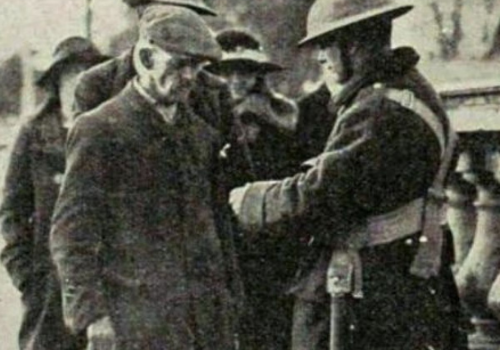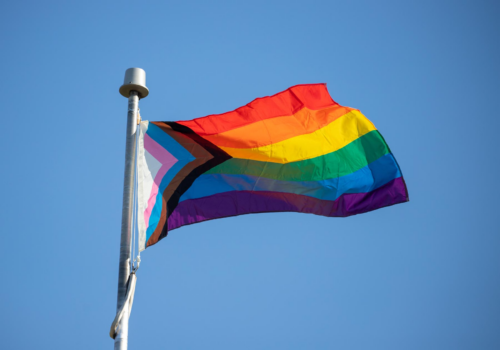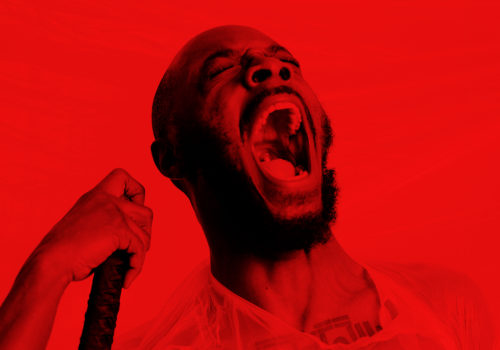Remembering Dublin’s Iconic Street Performer And Gay Activist Thomas “The Diceman” McGinty
Words: Dray Morgan
This week marks 30 years since the passing of Thomas McGinty, a street performer and iconic gay rights activist who enthralled and confused crowds of Dublin in the 70s, 80s and 90s.
Born in Scotland to Irish parents, Thomas moved to Dublin later on in life and began his performing career after dropping out of his accountancy course in Strathclyde University and being inspired by his college’s theatre group. Arriving in Ireland with only £40, he would perform on the street with a sign that read “In love with the country but unable to get employment, please give generously.” His first job eventually was as a nuder model for NCAD. He was dubbed “The Diceman”, after modelling for the Dublin Arcade ‘The Diceman Games Shop’.
McGinty’s performance style was a far cry from that of traditional performers. Taking a far more conceptual take to his production, it was not uncommon to see The Diceman, dressed in intricate costume designs, with perplexed pedestrians passing by. Multiple times he was seen dressed as the Mona Lisa, Dracula, a teapot and his most recognisable clown getup.
Most of the time his pieces were live art, standing stationary on Grafton Street, only giving a wink to those who gave him money. However, to circumvent busing laws, McGinty would slowly saunter around the city. He dubbed this his “Zen Walk”. He would commute from Spiddal in Galway every weekend, using local coffee shops as a dressing room.
Thomas also experienced various forms of abuse on the streets of Dublin, citing punching, kicking and slurs as a daily occurrence. In 1991, he was charged with breaching the peace for his risqué performance costume of just a loin cloth. McGinty grew in fame to the point where he was one of the most well-known street performers in Ireland. With consistent coverage in mainstream media and a successful theatrical in Europe and The U.S., McGinty became a celebrated peculiarity.
In 1990, homosexuality was illegal in Ireland, this built barriers to healthcare and contraception for the gay community and severely worsened the HIV epidemic which was prevalent at the time. At this time, McGinty publically announced his HIV diagnosis.
On Halloween in 1994, a tribute show was held for McGinty, where he was crowned “The High King of Ireland”. Proceeds from the show were used to pay for McGinty’s healthcare costs and cover his expected funeral.
In November 1994 he made an appearance on The Late Late Show with Gay Byrne, to shine a light on HIV activism and the roadblocks to treatment in Ireland. This was seen as a significant point in Ireland’s queer history as McGinty was one of the first public figures to open up about the taboo illness. “The Diceman” was cemented in Irish History as one of the most prominent gay icons.
Thoman “The Diceman” McGinty passed away on 20 February 1995 at the age of 42. His coffin was walked through Grafton Street, with large crowds gathering to pay their respects. A corner of Meeting House Square was renamed as “The Diceman’s Corner”, where a plaque still stands.
Since then, many tributes have been made to The Diceman, including exhibitions of his costume design and poems dedicated to his legacy.






